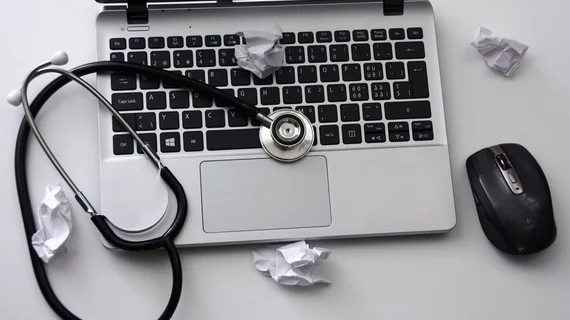As the coronavirus pandemic continues to spread, more provider organizations appear to be joining the bandwagon to let radiologists work from home. And some in the field believe this trend could continue, even after COVID-19 is contained.
One such example is Texas-based Collaborative Imaging, which has bolstered its telehealth capacity in recent weeks to allow more than 100 radiologists to read remotely.
Typically, Collaborative has six radiologists at sites, working just 2 feet apart, CEO Dhruv Chopra told the Dallas Business Journal Monday. they’re now staggering shifts so that one rad is always at the hospital.
“So if someone walks in with the virus, all the sudden you just lost six radiologists,” he said. “We have to make sure that we are protecting our physicians,” Chopra added.
In a recent blog post, consulting firm Healthcare Administrative Partners noted that Medicare has temporarily eased up physicians' ability to provide care remotely. That is expected to extend through the COVID-19 public health emergency, wrote Sandy Coffta, VP of client services.
Telehealth is typically restricted to patients in underserved areas and physicians who already have an established relationship with a patient. However, the emergency declaration helps free up physicians to help deliver more virtual care, she noted. And even before the emergency order, rads did have some options to consult remotely—whether through e-visits or quick virtual check-ins.
Earlier in March, radiologist blogger Barry Julius, MD, said he sees the coronavirus pandemic as a “wake-up call” to allow more of his peers to work from home. Others appear to agree, with several big-name institutions letting their radiologists avoid their daily commute, where possible, according to a recent Radiology study.
In a follow-up blog published Sunday, Julius said once the COVID dust settles, he predicts a “sea change” in the specialty. This new reality will include universal teleradiology at all hospitals and practices, coupled with fewer radiologists working on site, he wrote.
“The field of radiology will never be quite the same,” Julius, a physician in nuclear medicine with Saint Barnabas Medical Center in New Jersey, wrote March 29. “Although some of you may disagree, it makes logical sense as we are developing the infrastructure for these changes as the pandemic continues to smolder,” he added.

